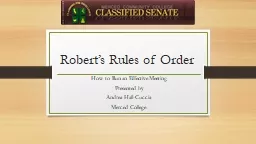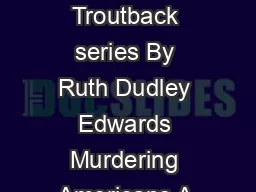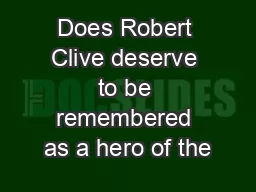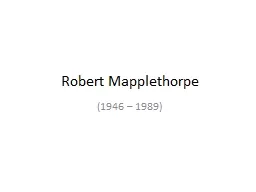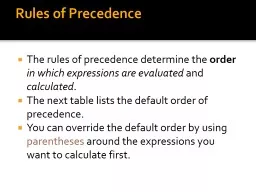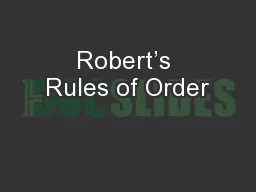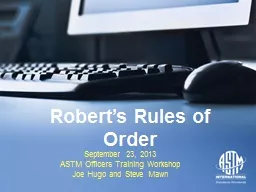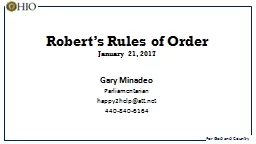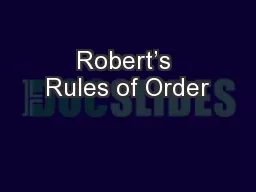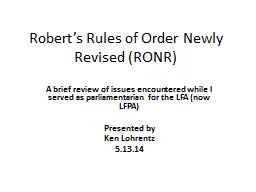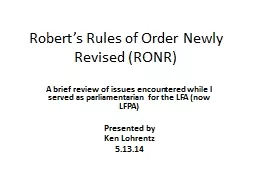PPT-Robert’s Rules of Order
Author : yoshiko-marsland | Published Date : 2018-10-26
How to Run an Effective Meeting Presented by Andrea HallCuccia Merced College Outline Governing framework Quorum AgendaOrder of Business Presiding Officer Approval
Presentation Embed Code
Download Presentation
Download Presentation The PPT/PDF document "Robert’s Rules of Order" is the property of its rightful owner. Permission is granted to download and print the materials on this website for personal, non-commercial use only, and to display it on your personal computer provided you do not modify the materials and that you retain all copyright notices contained in the materials. By downloading content from our website, you accept the terms of this agreement.
Robert’s Rules of Order: Transcript
Download Rules Of Document
"Robert’s Rules of Order"The content belongs to its owner. You may download and print it for personal use, without modification, and keep all copyright notices. By downloading, you agree to these terms.
Related Documents

